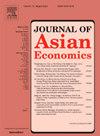城乡一体化的中国社会福利:教育福利如何改善现状?
IF 3.4
3区 经济学
Q1 ECONOMICS
引用次数: 0
摘要
中国在建立更具包容性和共享性的社会福利体系方面取得了显著进展。本文利用中国家庭收入项目(CHIP) 2013年和2018年的数据,以及财政教育支出数据,发现在考虑隐性教育收益后,中国居民的社会福利水平显著提高。在国家城乡一体化战略的推动下,农村社会保障渐进式改善和城乡义务教育均等化逐步缩小了城市、流动人口和农村群体在社会福利方面的收入差距。然而,国际比较表明,中国政府在社会保障和教育方面的支出仍然略显不足,限制了福利制度潜在的再分配效应。这些发现凸显了中国增加社会支出、更好地分配城乡福利资源以及促进高质量教育的紧迫性。本文章由计算机程序翻译,如有差异,请以英文原文为准。
More urban-rural integrated Chinese social welfare: How do education benefits improve the picture?
China has made remarkable progress in creating a more inclusive and shared social welfare system. Using data from the China Household Income Project (CHIP) 2013 and 2018, as well as data on financial expenditure on education, this paper found that the level of social welfare for Chinese residents increased significantly after considering implicit educational benefits. Driven by the national urban-rural integration strategy, incremental improvements in rural social security and the equalization of compulsory education across urban and rural areas progressively reduced income disparities in social benefits among urban, migrant, and rural groups. However, international comparisons reveal that Chinese government expenditures on social security and education remain slightly insufficient, limiting the potential redistributive effects of the welfare system. These findings highlight the urgency for China to increase social spending, better allocate welfare resources between urban and rural areas, and promote high-quality education.
求助全文
通过发布文献求助,成功后即可免费获取论文全文。
去求助
来源期刊

Journal of Asian Economics
ECONOMICS-
CiteScore
4.70
自引率
9.40%
发文量
90
期刊介绍:
The Journal of Asian Economics provides a forum for publication of increasingly growing research in Asian economic studies and a unique forum for continental Asian economic studies with focus on (i) special studies in adaptive innovation paradigms in Asian economic regimes, (ii) studies relative to unique dimensions of Asian economic development paradigm, as they are investigated by researchers, (iii) comparative studies of development paradigms in other developing continents, Latin America and Africa, (iv) the emerging new pattern of comparative advantages between Asian countries and the United States and North America.
 求助内容:
求助内容: 应助结果提醒方式:
应助结果提醒方式:


